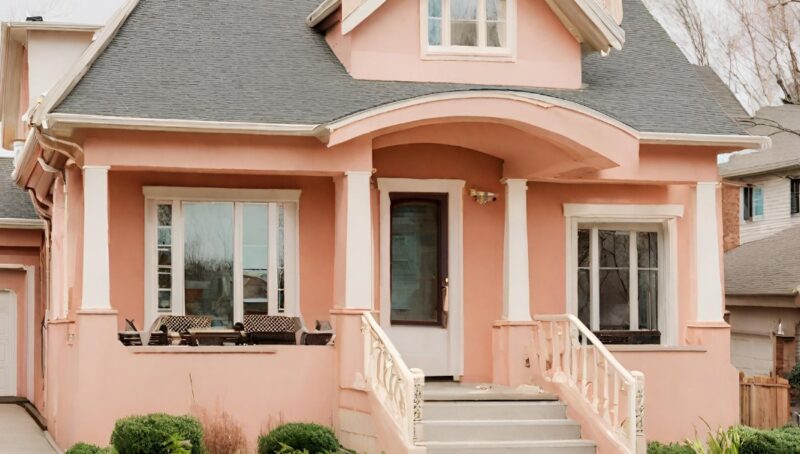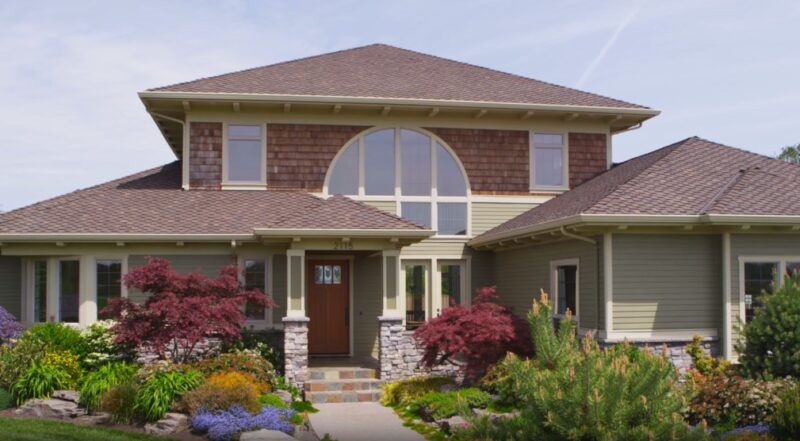Unlike the more basic DP1 and the intermediate DP2, this policy operates on an “open peril” basis. This means it covers all risks unless explicitly excluded by your insurer. Such a broad spectrum of protection provides peace of mind for property owners.
A standout feature is its approach to claim payments. Unlike policies that consider depreciation, it calculates claims based on replacement cost value (RCV). This ensures that the property can be restored to its pre-damage state without considering depreciation factors.
Key Takeaways
- Extensive Coverage and Customization Options: The DP-3 policy is notable for its broad range of coverage, protecting against a wide array of perils unless specifically excluded. It offers customization through endorsements and requires regular updates to align with evolving needs.
- Financial Implications: The cost of a DP-3 policy is determined by factors such as location, property attributes, and claim history. Selecting appropriate deductibles and coverage limits is crucial. Risk reduction strategies can also lead to more favorable premium rates.
- Efficiency in Managing Claims and Disputes: Understanding the claims process and preparing for potential disputes are important for DP-3 policyholders. Being knowledgeable about the claims procedure and one’s rights in case of disagreements ensures effective and prompt resolutions.
Structural Protection

One of the primary benefits is its comprehensive structural coverage. It extends beyond the main building to include detached structures. This broad coverage is essential for property owners with additional buildings, such as garages or sheds.
Coverage During Uninhabitable Conditions
If a covered peril renders the property uninhabitable, then it includes loss of use coverage. This provides financial assistance during the repair or rebuilding process, ensuring minimal disruption to the property owner’s financial stability.
Liability and Tenant Use

An often overlooked aspect is its personal liability coverage. This protects the property owner in case of injuries occurring on the property, offering a layer of security against potential legal issues.
Applicable for Non-residential Owners
This policy is particularly suitable for property owners who rent out their premises. It’s not designed for seasonal or frequently vacant properties, making it ideal for landlords who lease their properties year-round.
Comparison with Other Dwelling Policies
While it offers extensive coverage, DP1 and DP2 cater to different needs. DP1, being the most basic, covers fewer risks and factors in depreciation in claim payments. DP2, while more comprehensive than DP1, still lacks some of the key features of DP3, such as personal liability coverage.
| Feature | DP1 | DP2 | DP3 |
|---|---|---|---|
| Type of Coverage | Basic | Intermediate | Comprehensive |
| Perils Covered | Limited, Named Perils | More Perils than DP1 | Open Perils (All Risk) |
| Claim Payment Basis | Actual Cash Value (Depreciation Deducted) | Varies, often Actual Cash Value | Replacement Cost Value (No Depreciation) |
| Structural Coverage | Limited | Broader than DP1 | Extensive (Includes Detached Structures) |
| Loss of Use Coverage | Not typically included | May be included | Included |
| Personal Liability Coverage | Not included | May not be included | Included |
| Suitability | For basic needs, lower-risk properties | For moderate needs | For comprehensive needs, rental properties |
How to Choose the Right Policy?
The choice depends on the property owner’s specific needs and the level of coverage desired. While DP3 stands as the most inclusive option, it’s essential to evaluate the risks associated with your property to make an informed decision. There are many other solutions available as well. Therefore, proper comparison is essential. For example, between HO3 and HO8, and how do they compare to this one.
Sources for Policy Exploration
Locating the right DP3 policy can be achieved through various channels. Online insurance brokers offer a convenient starting point. Existing insurance providers, recommendations from fellow landlords, and networking with real estate professionals can also provide valuable insights.
Importance of Comparing Exclusions
While the DP3 policy is broad in its coverage, the exclusions named by insurers are crucial. These exclusions can significantly impact the extent of protection offered, making it vital to carefully compare options across different insurers.
Policy Exclusions and Limitations

While the DP3 policy covers a wide range of perils, it’s crucial to be aware of the exclusions. These are specific conditions or events that the policy does not cover. Each insurer might have different exclusions, so it’s essential to read the policy details carefully.
Significance of Exclusions
The exclusions in a DP3 policy can greatly affect the level of protection you receive. For example, if a certain natural disaster prevalent in your area is excluded, you might need additional coverage. Understanding these details ensures that you are not caught off guard in times of need.
Financial Considerations

Choosing a DP3 policy should involve evaluating its cost-effectiveness. Given its comprehensive coverage, it might come with a higher premium compared to DP1 or DP2. However, the added expense could be justified by the extensive protection it offers, especially in high-risk areas.
Balancing Premiums and Deductibles
A key financial aspect of choosing a policy is balancing the premiums with deductibles. Higher deductibles generally lead to lower premiums, but they also mean more out-of-pocket expenses during a claim. Finding a balance that suits your financial situation is crucial.
Premium Determinants
The cost of a DP-3 policy is influenced by various factors, including the property’s location, its age and condition, the presence of safety features, and the policyholder’s claim history. Awareness of these factors helps in making informed decisions about purchasing and maintaining your policy.
Deductibles and Coverage Limits
Choosing appropriate deductibles and coverage limits is a balancing act. Higher deductibles can lower your premiums but increase out-of-pocket expenses during a claim. Coverage limits should be sufficient to cover the cost of rebuilding your property in case of total loss.
Adapting Coverage to Changing Needs

Your needs as a property owner might change over time, and so should your insurance coverage. Regularly reviewing and adjusting your DP3 policy ensures it continues to meet your requirements. This might involve increasing coverage as you make improvements to your property or adjusting it based on changes in property usage.
Keep Up with Market Changes
The real estate and insurance markets are dynamic. Staying informed about these changes can help you adapt your DP3 policy accordingly. This ensures that your coverage remains relevant and offers the best possible protection against emerging risks.
Risk Management

Implementing risk mitigation strategies can lead to lower insurance premiums. For a DP-3 policy, measures like installing security systems, fire alarms, and undertaking regular property maintenance can make your property less risky to insure. These efforts not only enhance safety but also potentially reduce your insurance costs.
Emergency Preparedness
Being prepared for emergencies, especially those related to the perils covered under your DP-3 policy, is vital. This includes having evacuation plans, maintaining emergency kits, and understanding the procedures for filing a claim quickly and efficiently in case of a disaster.
Enhancing Coverage with Endorsements
A significant advantage of the DP-3 policy is the ability to add endorsements. These are additional coverage options that can be included to tailor the policy more closely to your specific needs. For instance, you can add endorsements for specific natural disasters not covered under the standard policy or for valuable personal property.
FAQs
What is excluded for DP 3?
A DP 3 policy is a dwelling fire policy that covers rental properties from all perils except those specifically excluded. Some common exclusions are flood, earthquake, war, nuclear hazard, wear and tear, mold, fungus, and ordinance or law.
What is the difference between DP3 and HO3?
A DP3 policy is designed for landlords who rent out their properties to tenants, while an HO3 policy is for homeowners who live in their primary residence. A DP3 policy covers the dwelling and other structures on an open perils basis, but the personal property on a named perils basis. An HO3 policy covers both the dwelling and the personal property on an open perils basis.
What is DP-2 insurance?
A DP-2 insurance policy is a landlord insurance policy that protects rental properties from any of the named peril losses. It’s a broad form insurance policy that covers more perils than the basic DP-1 policy, but less than the more robust DP-3 insurance policy. A DP-2 policy covers the dwelling and other structures on a replacement cost basis, and the personal property on an actual cash value basis.
Is the insureds home covered by a DP 3?
A DP 3 policy covers the insured’s home, as well as any other structures on the property, such as a detached garage, shed, or fence. However, it does not cover the personal belongings of the insured or the tenants, unless they are specifically added to the policy. The insured’s home is covered from all perils, except those that are excluded by the policy.
Summary
The DP-3 home insurance policy offers extensive coverage and flexibility, making it a valuable asset for property owners. Understanding its features, managing risks, and staying informed about its financial and legal aspects can maximize its benefits. Regular reviews and updates, along with a proactive approach to risk management and claims, will ensure that your investment remains well-protected under the DP-3 policy.
